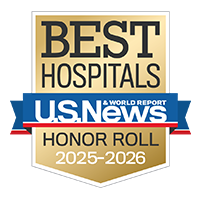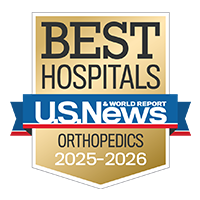Shoulder Fracture

Overview
Shoulder fractures may result from high-energy blunt trauma (such as a motorcycle or car crash), from falling on your own outstretched arm (trying to break your fall), or from another event that puts too much pressure on the area. These breaks most often occur at the top of the upper arm bone (proximal humerus) or in the shoulder blade (scapula).
Our approach to shoulder fracture
UCSF offers the best possible care for both simple and complex injuries of the shoulder bones. Most shoulder fractures can be treated with a sling to immobilize the bone while it heals. Other cases are best treated with surgery to realign and stabilize the bones. For all patients, our goal is to relieve pain and restore mobility, enabling a speedy return to normal life and favorite activities.
Awards & recognition
-

Among the top hospitals in the nation
-

Best in Northern California and No. 6 in the nation for orthopedic care
Signs & symptoms
Signs of a shoulder fracture after a specific event include:
- Extreme pain when moving the arm
- Swelling around the shoulder
- Skin abrasions
Treatments
A simple sling allows most fractures to heal by holding the shoulder in place. You'll likely return to the office periodically for follow-up X-rays to check that the bone is knitting together properly. Most patients also benefit from starting a physical therapy program after healing has begun. This program focuses first on regaining motion in the joint and then on rebuilding strength.
If, however, the fractured bone moved significantly out of place during your injury, you may benefit from surgery. Sometimes plates and screws are placed to hold the bone together, and the surgery is performed under general anesthesia. Depending on your injury and the procedure required to repair it, you may be able to go home the same day, but it's possible you'll need to stay in the hospital for a day or so of monitoring.
Patients generally wear a sling for six to eight weeks post-op. During this time, you won't be able to drive; you'll have X-rays periodically to ensure the bone is healing well; and you'll begin physical therapy, which is essential for regaining motion and strength. The time for full recovery depends on your exact injury, but for most patients, it takes six to nine months.
Frequently asked questions
- When can I drive after surgery for a shoulder fracture?
The first six weeks, you will be wearing a sling and won't be able to drive. You can resume driving once you're out of the sling and have appropriate control.
- When can I return to work?
Most patients can work at a desk or return to school five to seven days after surgery. If you're able to work from home, your recovery will be easier in the beginning. For physically demanding jobs – especially those that require overhead lifting or strenuous arm work – you may need more time for a safe recovery and medical clearance before returning.
- When can I return to sports and other physical activities?
Around six months post-op, most patients are able to resume their usual activities.
- When can I shower after surgery?
You'll need to keep the incisions clean and dry until your first post-op visit; you'll likely be cleared to shower then. But you'll need to wait three to four weeks after surgery before submerging the surgical site in a bathtub or swimming pool.
UCSF Health medical specialists have reviewed this information. It is for educational purposes only and is not intended to replace the advice of your doctor or other health care provider. We encourage you to discuss any questions or concerns you may have with your provider.









